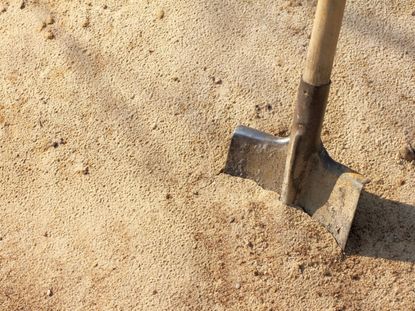Sandy Soil Amendments: How To Do Sandy Soil Improvements


If you live in a sandy area, you know that it can be difficult to grow plants in sand. Water runs out of sandy soil quickly and it can be hard for sandy soil to retain the nutrients that plants need to thrive. Sandy soil amendments can help improve sandy soil so that you can grow a wider variety of plants in your garden. Let's look at what is sandy soil and how you can go about amending sandy soil.
What is Sandy Soil?
Sandy soil is easy to spot by its feel. It has a gritty texture and when a handful of sandy soil is squeezed in your hand, it will easily fall apart when you open your hand again. Sandy soil is filled with, well, sand. Sand is primarily small pieces of eroded rocks. Sand tends to have large particles and the particles are solid and have no pockets where water and nutrients can hold to it. Because of this, water and nutrients tend to run out, and because sandy soil lacks both water and nutrients, many plants have a difficult time surviving in this kind of soil.
How to Improve Sandy Soil
The best sandy soil amendments are ones that increase the ability of the sandy soil to retain water and increase the nutrients in the soil as well. Amending sandy soil with well rotted manure or compost (including grass clippings, humus and leaf mold) will help to improve the soil the fastest. You can also add vermiculite or peat as sandy soil amendments, but these amendments will only add to the soil's ability to hold onto water and will not add much nutrient value to the sandy soil. When amending sandy soil, you need to watch the salt levels of the soil. While compost and manure are the best way to amend sandy soil, they contain high levels of salt that can stay in the soil and damage growing plants if the salt level builds up too high. If your sandy soil is already high in salt, such as in a seaside garden, be sure to use plant only based compost or sphagnum peat, as these amendments have the lowest salt levels.
Gardening tips, videos, info and more delivered right to your inbox!
Sign up for the Gardening Know How newsletter today and receive a free download of our DIY eBook "Bring Your Garden Indoors: 13 DIY Projects For Fall And Winter".

Heather Rhoades founded Gardening Know How in 2007. She holds degrees from Cleveland State University and Northern Kentucky University. She is an avid gardener with a passion for community, and is a recipient of the Master Gardeners of Ohio Lifetime Achievement Award.